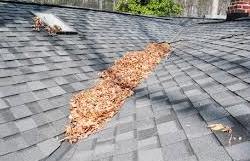A Guide on Roof Maintenance
The roof is, without a doubt, the most vulnerable components of any building’s exterior. It is usually exposed to UV radiation, rain, snow, sleet, and even high winds. All of which can significantly impair its functionality if left unchecked.
The ideal performance of a roofing structure does not only depend on an excellent design, quality materials, and appropriate installation. It also relies on taking the necessary time to integrate a regular roof maintenance program. The most critical purpose of such a program is to be in a position of safeguarding your investment.
An effective program will be able to prolong the lifespan of your roof and also allow you to identify minor issues in a time before they get serious. It will also offer improved protection to the internal functionality of your home.
DIY roof maintenance
There are some aspects of maintaining your roof which you can execute by yourself. The most esse ntial of these is keeping debris off your roof.
ntial of these is keeping debris off your roof.
Accumulated debris can block the efficient water flow on your roofing drains. This in, most cases than not, triggers localized water ponding, which can in the long run, bring about premature damage to your roof.
Professional roof maintenance
Additionally, it is very important to integrate regular roof inspections that are conducted by a skilled and experienced roofer. Ideally, it can be best to schedule at least two inspections each year, preferably in spring and fall.
This will enable such a professional to identify easily any issues and sort them out before they develop into complicated problems. The most vital components of a roofing structure that should be covered in such inspections are roof flashings and roof fields.
The first is where most roof leaks usually spring up. Therefore, the roofer you hire should conduct comprehensive inspections on the flashings, which are found around skylights, equipment curbs, perimeter walls and roof drains.
As for the roof fields, the roofer should check for surface wear, lap integrity as well as general degradation. A skilled roofing contractor will be able to identify any issues on both these areas, and provide the necessary repairs whenever necessary.
Maintain a hist orical file on your roof
orical file on your roof
Finally, it is highly recommended that you keep a regularly updated roof historical file. Such a document should contain the exact conditions of its warranty, which will permit you to determine the right course of action to follow whenever any problem crops up.
It should also include in-depth information on the roof’s installation, and any repairs or alterations that have been effected on your roofing structure. This way, you will be able to keep abreast of your roof’s exact condition at all times.…
